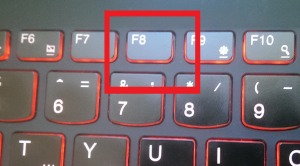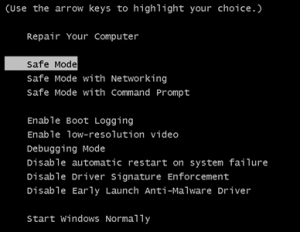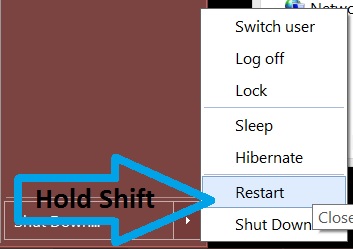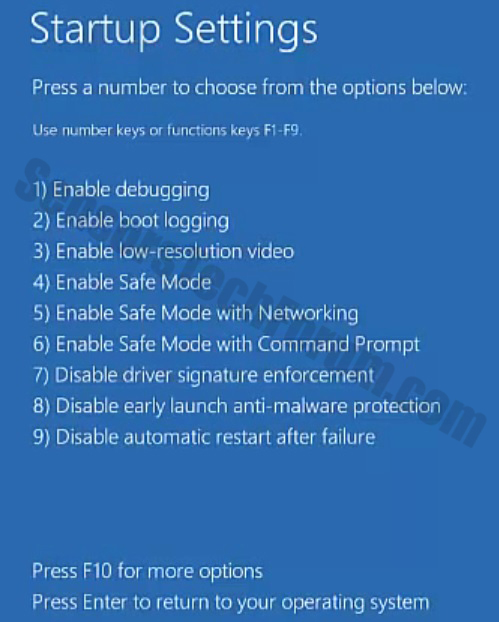| Name | Backdoor.Owashell |
| Type | Backdoor Trojan |
| Short Description | Steals user credentials and saves them in log.txt file in encrypted format. |
| Symptoms | A log.txt file in either of the hard drive partitions of the user PC. May also be present on a flash drive or a memory stick. PC crashing. Unfamiliar PC processes. Unusual behavior of familiar PC processes. |
| Distribution Method | Bundling. |
| Detection tool | Download Malware Removal Tool, to See If Your System Has Been Affected By Backdoor.Owashell |
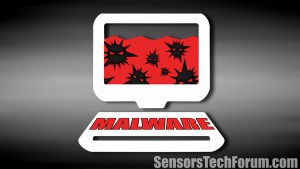 Backdoor.Owashell is your typical backdoor trojan. The difference in relation to other threats is that it is reported by Symantec researchers to be present on Outlook Web App which is an element in Microsoft Exchange Server. This particular trojan is known for stealing different information from the user PC, including PC’s time, username, password and other info momentarily. Security researchers strongly advise users to scan their systems with an advanced anti-malware program in case they identify any of the above-mentioned symptoms on their PCs.
Backdoor.Owashell is your typical backdoor trojan. The difference in relation to other threats is that it is reported by Symantec researchers to be present on Outlook Web App which is an element in Microsoft Exchange Server. This particular trojan is known for stealing different information from the user PC, including PC’s time, username, password and other info momentarily. Security researchers strongly advise users to scan their systems with an advanced anti-malware program in case they identify any of the above-mentioned symptoms on their PCs.
Backdoor.Owashell – How Did I Get Infected?
One way to become a victim of this trojan is to open a file from a spam e-mail message. Cyber criminals conduct many spam campaigns containing backdoors. A spam mail may contain different file attachments in it. They may be documents for reading or pictures. Most spam mails may also contain a second file that may be in one of the following potentially risky file types:
→.exe;.bat;.cmd;.dll
Such files usually activate scripts that create different files and thus infect the computer. This is why users should be on high alert for such files and always use mail software that blocks out any spam mails from the computer, such as Thunderbird or Firefox.
Backdoor.Owashell – More About It
Once on the computer, the trojan’s dll file is reported to create the following file in a specific drive or partition, for example:
→C:\log.txt
Once activated it looks to obtain the user’s time zone, his host address, usernames and passwords, user agents. What is more is that the trojan encrypts the information gathered and puts the encrypted code in the ‘log.txt’ file.
What happens next is that the threat opens up a back door connection on the infected PC. After this is done, researchers believe that the trojan may essentially assume control over the back door connection. From there it might:
- Steal directory information.
- Get read and write privileges to various files.
- Obtain file management privileges. (Cut, copy, delete, etc.)
- Download other malware on the user PC.
- Execute downloaded files from another server.
- Keep active connection with a malicious domain.
- In case the infected PC is a server, mess with the SQL Database.
Cyber-criminals have become increasingly smarter on their tracks to reach their goals. What is more, they have realized that the most important detain when infecting PCs with malware such as backdoors is the social engineering part itself. This is why both experienced and inexperienced users should constantly keep up to date with latest methods of infection and security software to detect and prevent them.
Backdoor.Owashell – Remove It from Your PC
In order to remove this threat it is vital to isolate it from the computer, first. The most simple and easy method of removing it is by simply booting into safe mode which is offline and scan your computer in this way. But some threats may even have scripts that prevent them to be discovered, like something called process migration, for example.
This is why in case the tutorial, mentioned below does not help you. You should scan your computer by booting a live Windows version from a standalone flash drive or a live CD. The fact that it will scan the system from distance without the actual OS running ensures that all of the threats connected with this virus are properly quarantined. For more information check this article. This method is also appropriate in case your computer has crashed.
IMPORTANT: Booting a live OS may be risky because if the malware has corrupted several key windows files, the OS may not function properly. Before attempting it, make sure you back up your data to another PC or a drive.
Step 1: Start Your PC in Safe Mode to Remove Backdoor.Owashell.
Removing Backdoor.Owashell from Windows XP, Vista, 7 systems:
1. Remove all CDs and DVDs, and then Restart your PC from the “Start” menu.
2. Select one of the two options provided below:
– For PCs with a single operating system: Press “F8” repeatedly after the first boot screen shows up during the restart of your computer. In case the Windows logo appears on the screen, you have to repeat the same task again.
– For PCs with multiple operating systems: Тhe arrow keys will help you select the operating system you prefer to start in Safe Mode. Press “F8” just as described for a single operating system.
3. As the “Advanced Boot Options” screen appears, select the Safe Mode option you want using the arrow keys. As you make your selection, press “Enter“.
4. Log on to your computer using your administrator account
While your computer is in Safe Mode, the words “Safe Mode” will appear in all four corners of your screen.
Removing Backdoor.Owashell from Windows 8, 8.1 and 10 systems:
Substep 1:
Substep 2:
Whilst holding down Shift button, click on Power and then click on Restart.
Substep 3:
After reboot, the aftermentioned menu will appear. From there you should choose Troubleshoot.
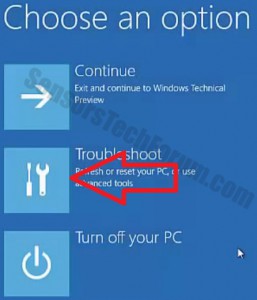
Substep 4:
You will see the Troubleshoot menu. From this menu you can choose Advanced Options.
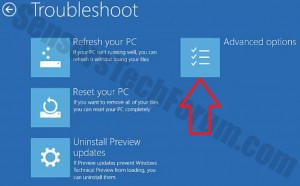
Substep 5:
After the Advanced Options menu appears, click on Startup Settings.
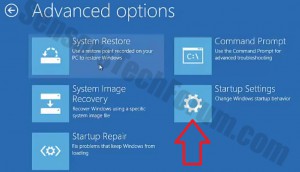
Substep 6:
Substep 7:
A menu will appear upon reboot. You should choose Safe Mode by pressing its corresponding number and the machine will restart and boot into Safe Mode so you can scan for and remove Backdoor.Owashell.
Step 2: Remove Backdoor.Owashell automatically by downloading an advanced anti-malware program.
To clean your computer you should download an updated anti-malware program on a safe PC and then install it on the affected computer in offline mode. After that you should boot into safe mode and scan your computer to remove all Backdoor.Owashell associated objects.
Preparation before removing Backdoor.Owashell.
Before starting the actual removal process, we recommend that you do the following preparation steps.
- Make sure you have these instructions always open and in front of your eyes.
- Do a backup of all of your files, even if they could be damaged. You should back up your data with a cloud backup solution and insure your files against any type of loss, even from the most severe threats.
- Be patient as this could take a while.
- Scan for Malware
- Fix Registries
- Remove Virus Files
Step 1: Scan for Backdoor.Owashell with SpyHunter Anti-Malware Tool



Step 2: Clean any registries, created by Backdoor.Owashell on your computer.
The usually targeted registries of Windows machines are the following:
- HKEY_LOCAL_MACHINE\Software\Microsoft\Windows\CurrentVersion\Run
- HKEY_CURRENT_USER\Software\Microsoft\Windows\CurrentVersion\Run
- HKEY_LOCAL_MACHINE\Software\Microsoft\Windows\CurrentVersion\RunOnce
- HKEY_CURRENT_USER\Software\Microsoft\Windows\CurrentVersion\RunOnce
You can access them by opening the Windows registry editor and deleting any values, created by Backdoor.Owashell there. This can happen by following the steps underneath:


 Tip: To find a virus-created value, you can right-click on it and click "Modify" to see which file it is set to run. If this is the virus file location, remove the value.
Tip: To find a virus-created value, you can right-click on it and click "Modify" to see which file it is set to run. If this is the virus file location, remove the value.Step 3: Find virus files created by Backdoor.Owashell on your PC.
1.For Windows 8, 8.1 and 10.
For Newer Windows Operating Systems
1: On your keyboard press + R and write explorer.exe in the Run text box and then click on the Ok button.

2: Click on your PC from the quick access bar. This is usually an icon with a monitor and its name is either “My Computer”, “My PC” or “This PC” or whatever you have named it.

3: Navigate to the search box in the top-right of your PC's screen and type “fileextension:” and after which type the file extension. If you are looking for malicious executables, an example may be "fileextension:exe". After doing that, leave a space and type the file name you believe the malware has created. Here is how it may appear if your file has been found:

N.B. We recommend to wait for the green loading bar in the navigation box to fill up in case the PC is looking for the file and hasn't found it yet.
2.For Windows XP, Vista, and 7.
For Older Windows Operating Systems
In older Windows OS's the conventional approach should be the effective one:
1: Click on the Start Menu icon (usually on your bottom-left) and then choose the Search preference.

2: After the search window appears, choose More Advanced Options from the search assistant box. Another way is by clicking on All Files and Folders.

3: After that type the name of the file you are looking for and click on the Search button. This might take some time after which results will appear. If you have found the malicious file, you may copy or open its location by right-clicking on it.
Now you should be able to discover any file on Windows as long as it is on your hard drive and is not concealed via special software.
Backdoor.Owashell FAQ
What Does Backdoor.Owashell Trojan Do?
The Backdoor.Owashell Trojan is a malicious computer program designed to disrupt, damage, or gain unauthorized access to a computer system.
It can be used to steal sensitive data, gain control over a system, or launch other malicious activities.
Can Trojans Steal Passwords?
Yes, Trojans, like Backdoor.Owashell, can steal passwords. These malicious programs are designed to gain access to a user's computer, spy on victims and steal sensitive information such as banking details and passwords.
Can Backdoor.Owashell Trojan Hide Itself?
Yes, it can. A Trojan can use various techniques to mask itself, including rootkits, encryption, and obfuscation, to hide from security scanners and evade detection.
Can a Trojan be Removed by Factory Reset?
Yes, a Trojan can be removed by factory resetting your device. This is because it will restore the device to its original state, eliminating any malicious software that may have been installed. Bear in mind, that there are more sophisticated Trojans, that leave backdoors and reinfect even after factory reset.
Can Backdoor.Owashell Trojan Infect WiFi?
Yes, it is possible for a Trojan to infect WiFi networks. When a user connects to the infected network, the Trojan can spread to other connected devices and can access sensitive information on the network.
Can Trojans Be Deleted?
Yes, Trojans can be deleted. This is typically done by running a powerful anti-virus or anti-malware program that is designed to detect and remove malicious files. In some cases, manual deletion of the Trojan may also be necessary.
Can Trojans Steal Files?
Yes, Trojans can steal files if they are installed on a computer. This is done by allowing the malware author or user to gain access to the computer and then steal the files stored on it.
Which Anti-Malware Can Remove Trojans?
Anti-malware programs such as SpyHunter are capable of scanning for and removing Trojans from your computer. It is important to keep your anti-malware up to date and regularly scan your system for any malicious software.
Can Trojans Infect USB?
Yes, Trojans can infect USB devices. USB Trojans typically spread through malicious files downloaded from the internet or shared via email, allowing the hacker to gain access to a user's confidential data.
About the Backdoor.Owashell Research
The content we publish on SensorsTechForum.com, this Backdoor.Owashell how-to removal guide included, is the outcome of extensive research, hard work and our team’s devotion to help you remove the specific trojan problem.
How did we conduct the research on Backdoor.Owashell?
Please note that our research is based on an independent investigation. We are in contact with independent security researchers, thanks to which we receive daily updates on the latest malware definitions, including the various types of trojans (backdoor, downloader, infostealer, ransom, etc.)
Furthermore, the research behind the Backdoor.Owashell threat is backed with VirusTotal.
To better understand the threat posed by trojans, please refer to the following articles which provide knowledgeable details.













